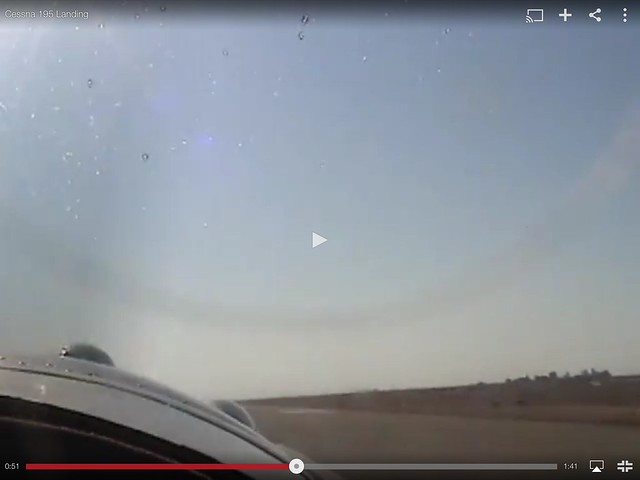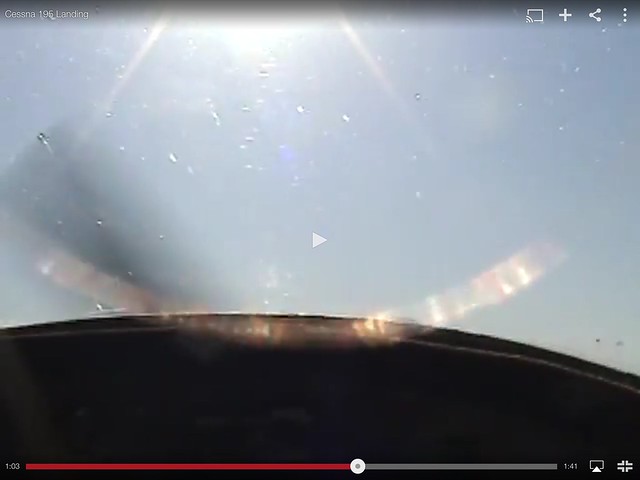cirrusmx
Line Up and Wait
- Joined
- Dec 20, 2011
- Messages
- 794
- Location
- Boston, Massachussetts
- Display Name
Display name:
campoalavista
aim somewhat to the right. to compensate. i also used to lovw landing on the left side. i am left handed.
Being on centerline on approach is irrelevant to being on centerline on landing.
Yep...Agreed...
Not likely to be much if any p-factor if landing at or near idle.
When that plane is idling on the ground, it is working against the brakes. It's different when you have gravity pulling you in motion.
Well, that's true- but what's your point.?
For a student pilot he should be focusing greatly on the precision of his landings.
I do that often times before I even have them try to land. Our 12,000 ft runway is great for such things.My CFI had me do the exercise of flying the full length of the runway in ground effect, and on each pass he'd say he wanted 1/3 left of the centerline, 1/3 right, and then back to center when powering up for the go around. Then maybe next time 1/2 on one side and back to center...
This not only helped my runway alignment, but my crosswind landings are pretty darn good, if I do say so myself.
You look 'through the nose' and land using peripheral vision.
Focus on precision is great, but to be a couple of feet off the centerline is nothing to stress over. If he was 20 feet over, yes there should be concern. That precision will come in time.
I'm sure if you sit at the airport and watch 100 landings, not even half are dead on centerline, they might be a few feet off.
Now thats an awesome view....must feel good to land that. I landed LIFR at 300 but no fog recently and was pretty geeked to see the rabbit but still had the sigh of relief when the wheels touched down.......
But i was still 1-2 feet left of the center line.....I blame it on ocular dominance...
Why be complacent though? A couple of feet off centerline is ok but wouldn't you like to be excellent and land exactly on the centerline?Focus on precision is great, but to be a couple of feet off the centerline is nothing to stress over. If he was 20 feet over, yes there should be concern. That precision will come in time.
I'm sure if you sit at the airport and watch 100 landings, not even half are dead on centerline, they might be a few feet off.
So you are saying you physically look to the side when landing a tailwheel with little forward visibility?This may be something like "North Up vs Track Up".
Enough people are advocating different techniques that there may be an underlying difference in how we see and process visual cues.
I have flown many planes where when the nose came up it completely blocked the view forward. "I was taught" to look to the side to still be able to see. That advice seemed to agree with guidance from various publications, and it has always worked for me.
Maybe there are fundamental differences in the way we see. My peripheral vision has always tested as normal, but I honestly do not think mine is sufficient to judge my height over the runway and my spacing from each runway edge while staring straight ahead. Not to say that others can't.
In my Citabrias, you seem to be saying to focus on a spot between my student's shoulder blades and use my peripheral vision. Again, the way I'm wired has me seeing my height and runway alignment MUCH more clearly just looking out to the side.
So you are saying you physically look to the side when landing a tailwheel with little forward visibility?
Suit yourself. Peripheral vision has always worked just fine for me landing from the back seat of T-6s and my Waco.
Why be complacent though? A couple of feet off centerline is ok but wouldn't you like to be excellent and land exactly on the centerline?
So you are saying you physically look to the side when landing a tailwheel with little forward visibility?
Suit yourself. Peripheral vision has always worked just fine for me landing from the back seat of T-6s and my Waco.


Here's that video:
http://youtu.be/lFGkPNg3c4M
The copilot or instructor appears to have a head mounted camera, so it should be pointing about where he's looking - most people will turn their head to point at the thing they wish to focus on.
Focus on precision is great, but to be a couple of feet off the centerline is nothing to stress over. If he was 20 feet over, yes there should be concern. That precision will come in time.
It looks like he's landing way left of the centerline.
Depending on who was flying, in a plane that totally obstructs your forward vision you kinda do have to offset just a tad to keep the centerline in view.
Or maybe the left seat pilot was just falling victim to the same tendencies the OP was asking about!
I figured that if the right-seat was flying it, he might have been using the centerline stripes as an edge guide. The aircraft parallels that line pretty closely, with it just visible to the right seat guy.

20 Feet over would put me in the grass
Ha ha I'm not so far off I'm having to go around, I just seem to be consistently landing a couple of feet left of center.That's really the key to stopping it. Find narrow runways. They'll fix whatever problems you have in the first three go-arounds. Heh.
What good would such a video do? The camera in that second frame you posted is not showing any of the peripherals. I guarantee you I can see more out of the sides in my peripheral vision in my Waco.Just a single example, but I'm curious - can anyone find and post a video of a similar obstructed-view landing where the whole landing process looks like that second frame? I think from what several have said, the whole landing should look like that since they're looking "through" the panel, head straight, and using just peripheral cues.
Ha ha I'm not so far off I'm having to go around, I just seem to be consistently landing a couple of feet left of center.
Ha ha I'm not so far off I'm having to go around, I just seem to be consistently landing a couple of feet left of center.
It looks like he's landing way left of the centerline.
So you are saying you physically look to the side when landing a tailwheel with little forward visibility?
Suit yourself. Peripheral vision has always worked just fine for me landing from the back seat of T-6s and my Waco.
It's all individual preference I guess...Whatever works.
You missed my point. Go find a runway where a couple of feet will put a wheel in the grass and you won't do it anymore. Narrow runway. Really narrow. Or wider airplane. Haha.
Let's get something clarified, are we talking 2' left of centerline with the gear between the mains nearer the right wheel, or with the centerline 2' outside the right main?
That's what I was trying to say with the skinned cats.
This just surprises me, is all - I would have thought on having one's view blocked to the front, looking out the side would be natural and instinctive.
Kinda like Track Up!
Maybe its a perceptual divide between the center focus crowd that favors looking out the side and the peripheral cue crowd that handles it by focusing forward yet "seeing" peripherally.
Vive la difference!
Oh, and "whatever works" is one of my catch phrases!

It is instinctive, and leads to groud loops when people give in...
I agree, I need to break myself of these things now before they become habit. Thanks for the adviceOh; another thing, Tony; and it may have already been mentioned, but all this parralex and looking from the left seat problems will go away if you treat it like a single seat.
Just pretend the right seat doesn't exist. Line up with the centering between your legs.
Straddle the centerline with your legs so that your feet would be saddled the line if you were a bird landing on your feet.
When you sight straight down a line, like looking down and thru the sight of a rifle, you can perceive the slightest drift or yaw much quicker.
Straddle the centerline always, even when taxxing, in time it will come automatically, but only if you drill it into your automatic nervous system now.
